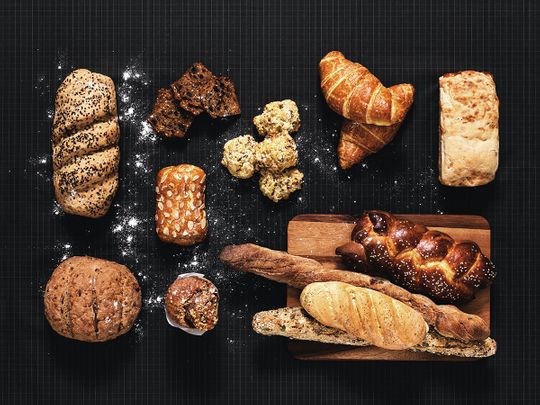
Indians have rotis, naan, and parathas. The French have boule, brioche, and baguette. Armenians have lavash and Ethiopians have injera. Arabs have saj, khubz and manoushe. The British have scones and the Polish have challah. No matter where you go, people love their bread.
Click start to play today’s Word Search, where you can spot various varieties of bread. Don't forget to visit Gulf News' Food section for all things to do with food, cooking and cuisines.
It’s no wonder why varieties of bread are adored around the world. Archeobotanical evidence, published in the US-based journal Proceedings of the National Academy of Sciences (PNAS) in July 2018, found that our relationship with bread began 14,400 years ago in northeastern Jordan. Bread could be far older, but this is the point where scientists have found proof that it existed.
Archaeologists recovered 22 “bread-like” remains from an ancient fireplace in the Black Desert region of Jordan. And it wasn’t just any bread – it was unleavened flat bread.
Remarkably, people were making bread in Jordan even before the rise of agriculture. The inhabitants of the region are linked to the Natufian culture (dating to around 15,000 years ago), and the descendants of Natufian are believed to be the ones who established agriculture, and set the course to modern-day farming. Before this discovery, the oldest bread sample recovered was from Anatolia, Turkey, dating to 9,500 years ago, well within the agricultural revolution.
Today, almost every culture has its own version of bread. Spot “tortilla” in today’s Word Search! The term comes from the Spanish word for “little cake”. Tortillas have been around for thousands of years. According to Mayan legend, the first tortilla was a gift – a peasant invented corn tortilla and presented it to his king over 12,000 years ago. The thin, circular unleavened flatbread has been known to be a staple of both Mayan and Aztec diets.
Another beloved item made from unleavened dough is the croissant, which you can find in today’s puzzle. The word instantly takes you to France, but did you know croissants began as the Austrian kipfel? A crescent-shaped baked good, featuring a generous amount of butter, and sometimes sugar and almonds, the kipfel is croissant’s muse, according to a July 2018 report in the American popular science magazine Scientific American.
But the croissant became quintessentially French when bakers from the country began to make it with puffed pastry – a true-blue French innovation. Today, the kipfel and the croissant taste completely different. Order a kipfel and you will likely be handed a crescent-shaped cookie that is distinctive from its flaky, buttery counterpart.
What is your favourite kind of bread? Play today’s Word Search and tell us at games@gulfnews.com.









